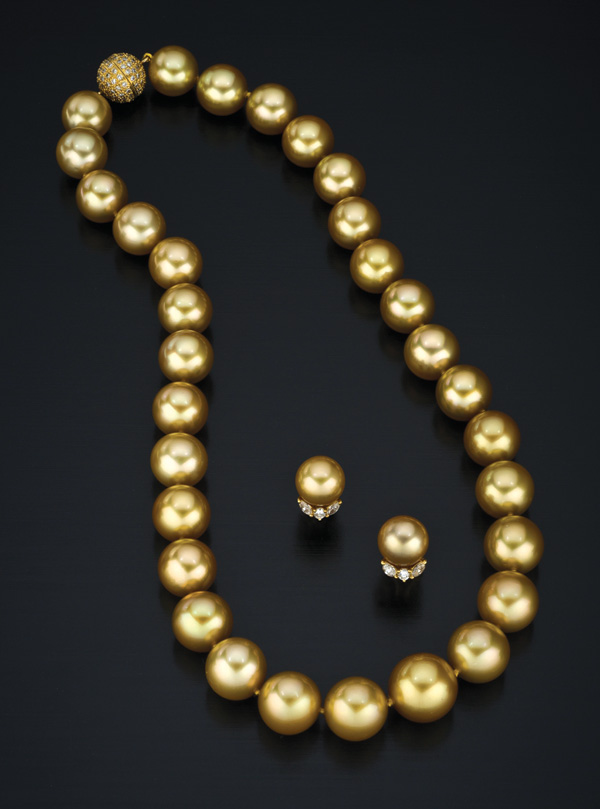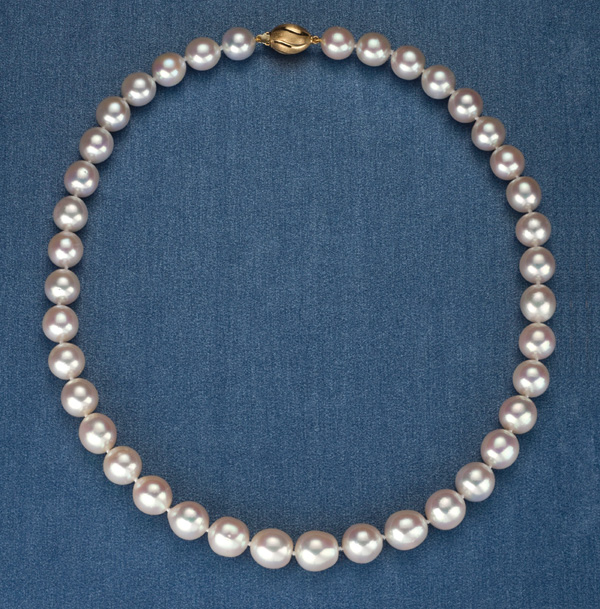Pearls are the original treasure of the seas. These enchanting gems have caught the fancy of royalty and commoners alike.
So if you are looking to buy a new strand of pearls or a designer pearl ring, let us help you understand the basics so that you can make an informed purchase. We are, Gemological Institute of America (GIA), the creators of 7 Value Factors of Pearls, a standard used to evaluate the pearl quality.
What are pearls?
Pearls are organic gemstones. Pearls can be natural (naturally occurring) or cultured (made from natural oyster but with human intervention) and grow in molluscs that are cultivated in salt water or fresh water.
Pearls are made up of nacre, a natural substance produced by pearl oysters that coats the inside of the animal’s shell. This beautiful, lustrous nacre is the very essence of a pearl.
The Middle East is known for its glorious heritage in natural pearls. However, today, natural pearls are very rare to find and are limited in supply. What you will find most often in jewellery are cultured pearls. Pearls come in eight basic shapes: round, semi-round, button, drop, pear, oval, baroque (without a specific shape), and circled. Perfectly round pearls are the rarest and most valuable shape.

TYPES OF PEARLS
Salt Water Cultured Pearls
Akoya pearl will mostly white, round, lustrous gems cultured in Japan and China. Most Akoya cultured pearls are white or cream and some have hints of rosé (pink) or green. The Akoya oyster is relatively small, so it doesn’t usually produce a cultured pearl larger than 9 mm.
Tahitian cultured pearls have only been in the market since the 1970s and come in colours like eggplant purple, peacock green, metallic gray and grayish blue. The Mollusc that produces them is native to French Polynesia and is farmed there and in the Cook Islands. It can grow as large as 30 cm (12 in.) in diameter, sometimes weighing 5 kg (11 lbs.).
South Sea cultured pearls come from one of the world’s largest pearl oyster, which produces large cultured pearls, some measuring 15 mm and larger. They are farmed in Australia, Burma, the Philippines and Indonesia. While South Sea cultured pearls occur in other colours, silver, white and yellow (sometimes referred to as “golden”) are the most common.

Freshwater Cultured Pearls
Cultured pearl farmers in China produce the overwhelming majority of cultured freshwater pearls. These cultured pearls vary widely in colour and are generally more affordable than salt water cultured pearls. Sizes are comparable to Akoya cultured pearls, with a range between 2 mm and 13 mm, although larger sizes are now available.
So the next time, you go shopping for pearls, don’t let the different varieties confuse you from making a confident purchase! To ensure you are getting pearls true to their value, ask your jeweller to provide an independent grading report. GIA is an independent and non-profit organisation which issues grading reports that are considered the most respected. GIA has developed the comprehensive standards for pearl grading used worldwide.
Just like coloured stones and diamonds, your pearls are thoroughly screened to identify any pearl types, molluscs and known treatments. GIA gemmologists examine each pearl closely to provide the most accurate report on 7 Pearl Value Factors™. Every GIA Pearl Grading Report contains these assessments and other additional details.

Want to learn more?
If gems and jewellery are your passion and you are interested in learning about them in detail, GIA offers a host of courses designed for gem and jewellery aspirants, professionals and consumers alike. From gemmology and jewellery design to merchandising and sales – choose a course that suits your interest and earn a qualification that is recognized throughout the world.
To learn more about diamonds, coloured stones, pearls or jewellery design, attend classes conducted by GIA in various locations across the Middle East. To study in detail about pearls, opt for GIA’s one-day Pearl grading lab Class that will teach you determine the quality of a variety of pearls.
If diamonds are your passion, opt for GIA’s respected Graduate Diamonds Diploma (7 Weeks) that will teach you everything you need to know about diamonds – from origins to 4Cs, and treatments and synthetics to simulants. This course in conducted in Dubai and other important locations across the Middle East. You can also opt for a home study version of this course with the help of a dedicated instructor and complete the course in 6 months.
For a shorter duration, consider GIA’s Diamond Grading Lab Class (DGL) – a practical course that will teach you about the 4Cs of diamonds working on real stones. GIA conducts similar classes for coloured stones as well.
If you are creative and are looking for art-and-design-related courses, you can opt for GIA’s SWIFT Jewellery Design Course. This course will teach you translate your ideas into design and composition. You will learn the role of a jewellery designer and gain the understanding that goes behind designing jewellery.
Other than these, you also can opt for special hobby classes conducted by GIA. These are short and interesting programmes like “Know Your Jewellery”, “How to buy Jewellery”, “Introduction to Jewellery Design”, “Pearl Stringing” etc. that are designed for consumers and connoisseurs of jewellery.
For more details on pearls, write to edume@gia.edu / labme@gia.edu or visit us at www.giamideast.com
 Collection Pan Arab Luxury Magazine
Collection Pan Arab Luxury Magazine


